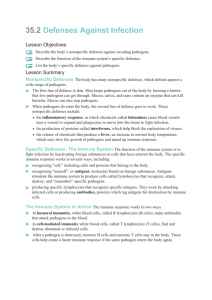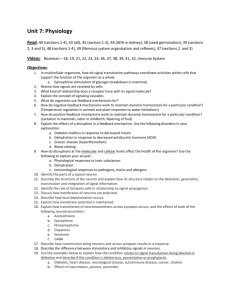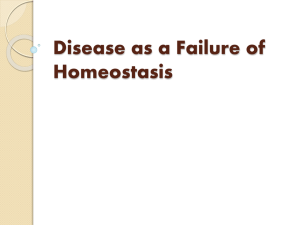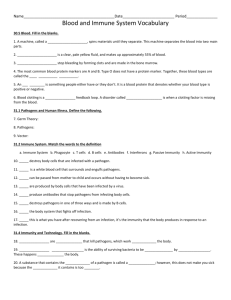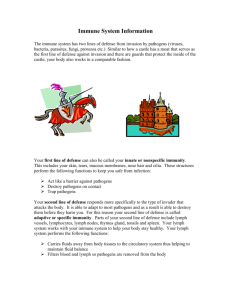Immune System Study Guide
advertisement
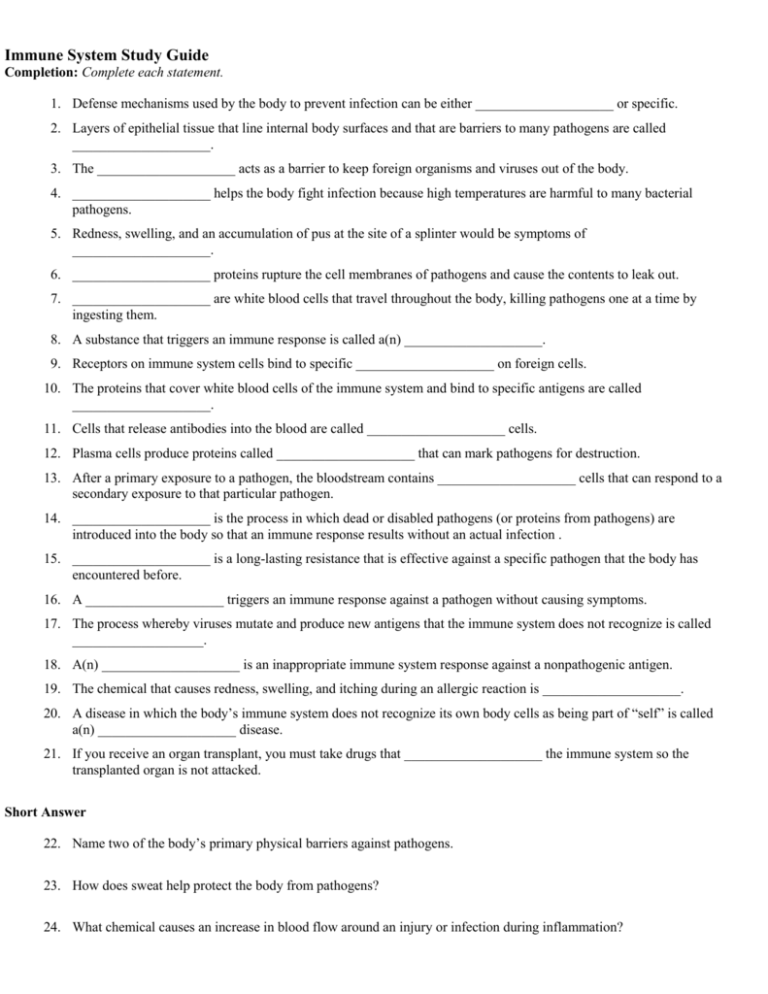
Immune System Study Guide Completion: Complete each statement. 1. Defense mechanisms used by the body to prevent infection can be either ____________________ or specific. 2. Layers of epithelial tissue that line internal body surfaces and that are barriers to many pathogens are called ____________________. 3. The ____________________ acts as a barrier to keep foreign organisms and viruses out of the body. 4. ____________________ helps the body fight infection because high temperatures are harmful to many bacterial pathogens. 5. Redness, swelling, and an accumulation of pus at the site of a splinter would be symptoms of ____________________. 6. ____________________ proteins rupture the cell membranes of pathogens and cause the contents to leak out. 7. ____________________ are white blood cells that travel throughout the body, killing pathogens one at a time by ingesting them. 8. A substance that triggers an immune response is called a(n) ____________________. 9. Receptors on immune system cells bind to specific ____________________ on foreign cells. 10. The proteins that cover white blood cells of the immune system and bind to specific antigens are called ____________________. 11. Cells that release antibodies into the blood are called ____________________ cells. 12. Plasma cells produce proteins called ____________________ that can mark pathogens for destruction. 13. After a primary exposure to a pathogen, the bloodstream contains ____________________ cells that can respond to a secondary exposure to that particular pathogen. 14. ____________________ is the process in which dead or disabled pathogens (or proteins from pathogens) are introduced into the body so that an immune response results without an actual infection . 15. ____________________ is a long-lasting resistance that is effective against a specific pathogen that the body has encountered before. 16. A ____________________ triggers an immune response against a pathogen without causing symptoms. 17. The process whereby viruses mutate and produce new antigens that the immune system does not recognize is called ___________________. 18. A(n) ____________________ is an inappropriate immune system response against a nonpathogenic antigen. 19. The chemical that causes redness, swelling, and itching during an allergic reaction is ____________________. 20. A disease in which the body’s immune system does not recognize its own body cells as being part of “self” is called a(n) ____________________ disease. 21. If you receive an organ transplant, you must take drugs that ____________________ the immune system so the transplanted organ is not attacked. Short Answer 22. Name two of the body’s primary physical barriers against pathogens. 23. How does sweat help protect the body from pathogens? 24. What chemical causes an increase in blood flow around an injury or infection during inflammation? 25. What is the difference between specific and nonspecific immune responses? 26. What do cytotoxic T cells do? 27. What kind of proteins are produced by plasma cells to tag pathogens for destruction? 28. What kind of cells produce antibodies? 29. Refer to the illustration above. During which time period would the first antibodies to the pathogen be produced? 30. Refer to the illustration above. Which time period would be characterized by the most rapid division of B cells? 31. What kind of white blood cells can make the body immune to a disease that the body has encountered before? 32. What might happen if the immune system were not suppressed after an organ transplant? 33. What disease is characterized by an immune system attack on the cells of the pancreas that produce insulin? 34. What does the acronym AIDS stand for? 35. What is the name of the virus that causes AIDS? 36. What kind of cells does HIV destroy?




